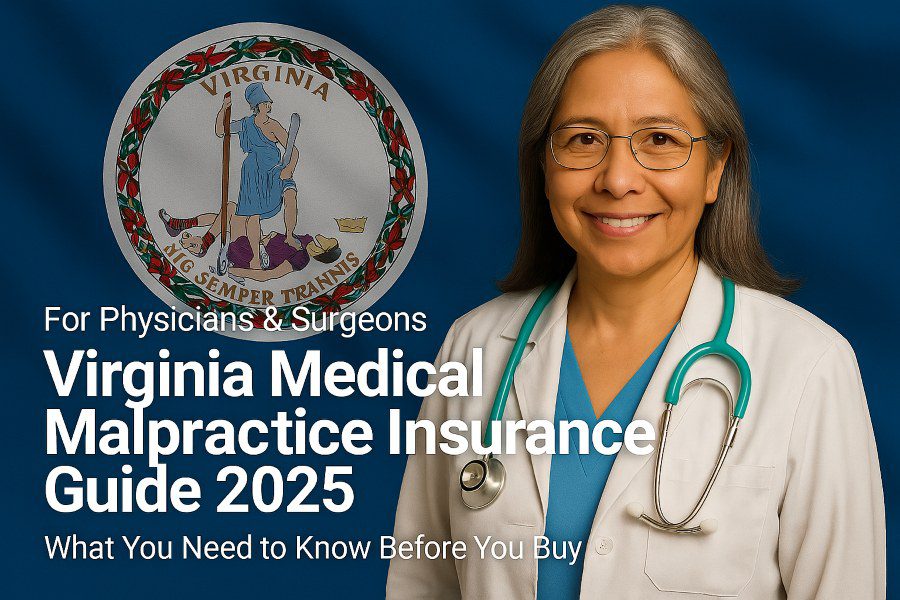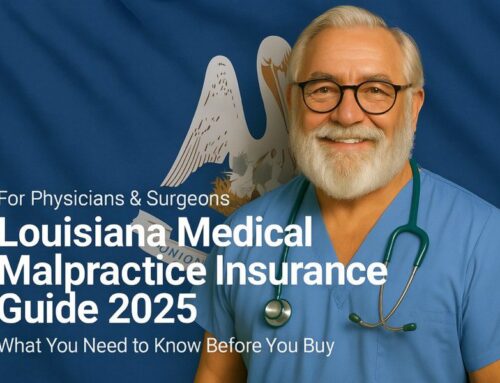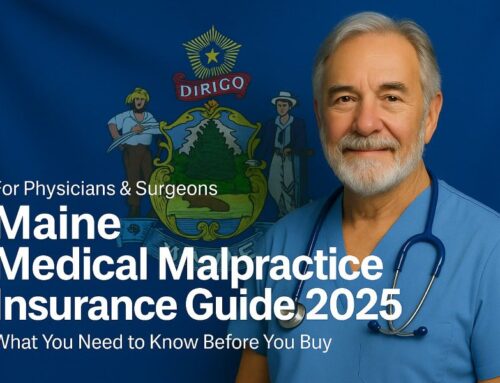TOP 5 MEDICAL MALPRACTICE INSURANCE COMPANIES IN VIRGINIA
We recommend carriers with an AM Best “A” or higher rating. An A-rating indicates financial strength, long-term solvency, and an established history of protecting Virginia physicians.
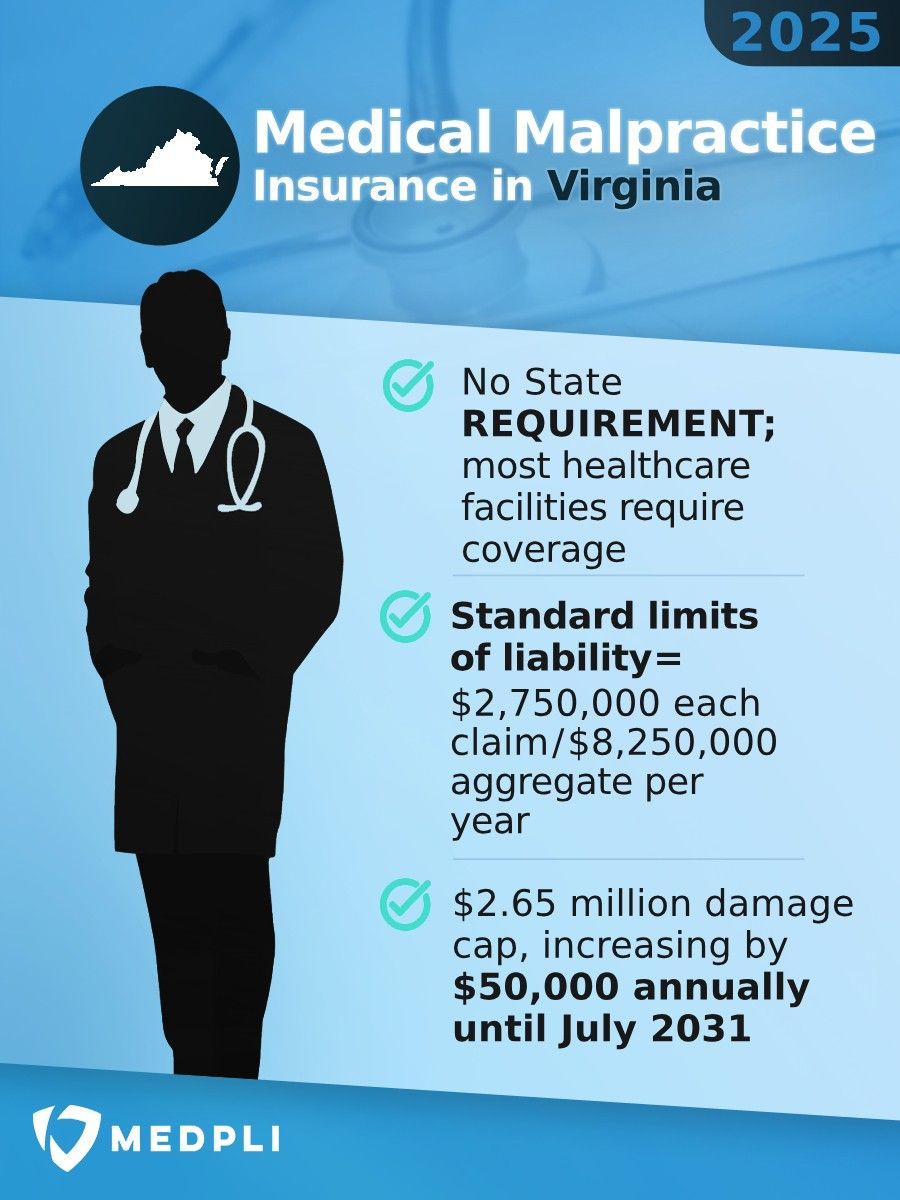
2025 Virginia Malpractice Insurance Rates by Specialty
These rate estimates are for informational purposes only and are based on the VA standard limits of $2,750,000 for Each Claim / $8,250,000 Aggregate per year in coverage.
Quotes require a completed application and underwriter approval. Contact us for a custom estimate if you don’t see your specialty.
| Specialty | 2025 Annual Premium |
2025 Tail Premium |
|---|---|---|
| Anesthesiology | $33,000 | $66,000 |
| Cardiovascular Disease– Minor Surgery | $32,000 | $64,000 |
| Dermatology– No Surgery | $13,000 | $26,000 |
| Emergency Medicine | $47,000 | $94,000 |
| Family Practice– No Surgery | $17,000 | $34,000 |
| Gastroenterology– No Surgery | $29,000 | $58,000 |
| General Practice– No Surgery | $17,000 | $34,000 |
| General Surgery | $89,000 | $178,000 |
| Internal Medicine– No Surgery | $17,000 | $34,000 |
| Neurology– No Surgery | $36,000 | $72,000 |
| Obstetrics and Gynecology– Major Surgery | $96,000 | $192,000 |
| Occupational Medicine | $10,000 | $20,000 |
| Ophthalmology– No Surgery | $8,000 | $16,000 |
| Orthopedic Surgery– No Spine | $54,000 | $108,000 |
| Pathology– No Surgery | $19,000 | $38,000 |
| Pediatrics– No Surgery | $15,000 | $30,000 |
| Pulmonary Disease– No Surgery | $28,000 | $56,000 |
| Psychiatry | $11,000 | $22,000 |
| Radiology – Diagnostic | $41,000 | $82,000 |
Virginia Medical Malpractice Payouts From 2015-2024
Rising Home Insurance Rates: The Hidden Impact on Medical Malpractice Costs
When hurricanes and other severe storms hit Virginia, the damage isn’t just physical—it drives up insurance costs statewide. As extreme weather events become more frequent, insurers must raise rates to cover growing risks. As a result, Virginia’s home and auto insurance industries are seeing increased costs. But the impact goes beyond Virginia homeowners—businesses, including medical professionals, also feel the squeeze.
Why Are Insurance Rates Rising?
How the Costs of Virginia’s Medical Malpractice Insurance Rates Are Affected
Reinsurance providers now charge higher premiums and impose stricter payout conditions. In response, primary insurers increase premiums, including for medical malpractice coverage in Virginia.
Severe weather isn’t just a coastal problem—it’s reshaping insurance costs for everyone.
Types of Professional Liability Insurance for Virginia Physicians
Types of Professional Liability Insurance for Virginia Physicians
Physicians in Virginia can choose between these two primary types of medical malpractice insurance:

- Provides coverage for incidents that occurred during the policy period IF the claim is filed while the policy is still active. If a claim is filed after the policy ends, that claim is NOT covered.
- Typically, it offers lower premiums at the start of the policy, but rates increase yearly as the policy matures.
- Physicians must obtain tail insurance coverage when a claims-made policy ends to ensure protection against future claims related to incidents that occurred during the policy period. Tail insurance premiums require a one-time cash payment equal to approximately 200% of the claims-made policy’s annual premium.
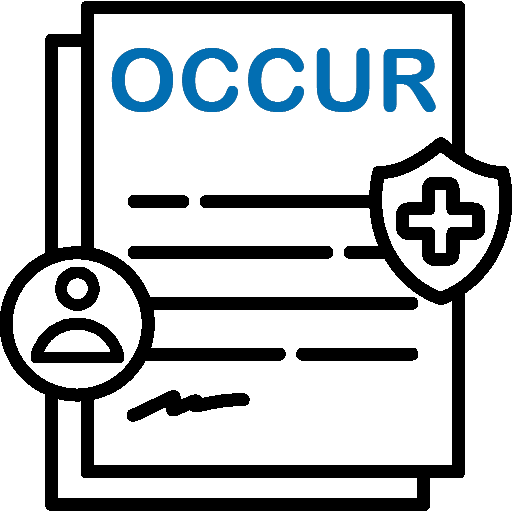
- Provides coverage for incidents that occurred during the policy period, regardless of when a claim is reported to the carrier.
- Typically, it offers more costly premiums at the start of the policy, but the rate stays constant throughout the policy’s duration.
- Physicians do not need tail coverage when an occurrence policy ends.
In 2024, Virginia physicians were held liable for 155 medical malpractice payouts.
- Average Payout: $498,243
- Total Payout: $77,227,750
(Source: National Practitioner Data Bank)
Does Virginia Have Damage Caps for Medical Malpractice Lawsuits?
Unlike most states, Virginia caps both economic and non-economic damages in malpractice cases.
Virginia Damage Caps breakdown
- Economic and Non-economic Damages: The current total cap for combined damages is $2.65 million, increasing July 1st of each year until it reaches $3 million in July 2031.
- Punitive Damages: This total cap includes punitive damages, which cannot exceed $350,000.
- Wrongful Death Cases: There is no exception for wrongful death cases.
Notable Legislation for Virginia’s Damage Caps
- 1976: In response to the surge in medical malpractice cases and costs in the mid-1970s, Virginia passed a $750,000 damage cap for medical malpractice cases.
- 1999: Damage cap increased to $1 million.
- 2011: Current damage cap plan enacted. Damage cap increases $50,000 annually until it reaches $3 million in July 2031.
Virginia Statute of Limitations for Medical Malpractice Claims
The Code of Virginia states that malpractice actions must be filed within two years from injury discovery—or when the plaintiff should have discovered the injury—but cannot exceed ten years after the alleged malpractice.
Key Rules & Exceptions
- Minors: The two-year statute of limitation remains in effect for suits brought on behalf of a minor unless the minor involved was younger than eight years old at the time of alleged malpractice, in which case the action must be filed by the minor’s tenth birthday.
- Wrongful Death: A wrongful death suit must be filed by a personal representative of the patient within two years of the death.
- Foreign object(s): If a foreign object was left in the plaintiff’s body, the statute of limitations starts one year from when the patient discovers, or should have discovered, the object.
- Negligent Failure: If negligence by the physician prevented the diagnosis of certain conditions, such as malignant tumors and cancer, the statute of limitations starts one year from the date of diagnosis.
- Other Scenarios: Title 8.01, Chapter 4, Article 1 of the Code of Virginia provides a complete list of exceptions to the statute of limitations.
Why Virginia Doctors Partner with MEDPLI
We exclusively broker medical malpractice insurance, focusing daily on making the professional liability process less burdensome and expensive for doctors.
With MEDPLI, Virginia physicians:
MEDPLI helps doctors in every specialty.
Whether you’re a General Surgeon in Virginia Beach or an OBGYN in Staunton, MEDPLI will find you premier coverage at a competitive rate.
Call 800-969-1339 or Request a Quote.

